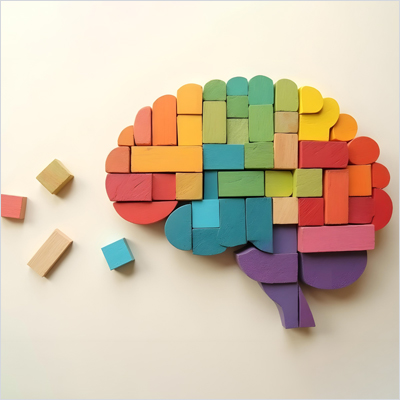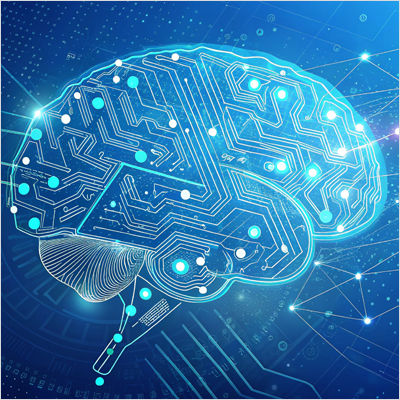Enhanced vocabulary editing and governance in metaphactory
In a previous article, we explored ontology governance in metaphactory. Here, we'll explore new features that enable flexible and transparent governance and editorial workflows for your vocabularies, simplifying collaboration among multiple team members. Keep reading!
From data to decisions: How Enterprise AI, powered by Knowledge Graphs, is redefining business intelligence
Struggling to turn data lakes into actionable knowledge? Enterprise AI needs context. This article reveals how Knowledge Graphs and LLMs redefine business intelligence, safeguarding institutional wisdom and breaking data silos. Gain the competitive edge with truly data-driven decisions—keep reading!
SEMANTiCS 2025 Conference Report
Couldn’t make it to SEMANTiCS 2025 in Vienna? Our Community Growth Manager, Larry Swanson, was there soaking up the talks and hallway conversations with fellow semantic-tech enthusiasts. From real-world applications like ZEISS’s Service Copilot and IKEA’s evolving enterprise-scale knowledge infrastructure to recurring themes around the interplay of knowledge graphs and LLMs, Larry came back with plenty of inspiration and a few standout takeaways. Keep reading for the full report!
Neuro-symbolic AI: The key to truly intelligent systems
Discover how neural-network technologies like large learning models and generative AI work with symbolic technologies like knowledge graphs to give enterprises the trustworthy AI they need.
This article was previously published on the Big Data Value Association (BDVA) blog.
Human-in-the-Loop for AI: A Collaborative Future in Research Workflows
Discover how a human-in-the-loop (HITL) AI approach can transform healthcare and life sciences research. This article, originally a ReadCube whitepaper, explores combining AI efficiency with human oversight for reliable, ethical and groundbreaking discoveries. Keep reading!
Keeping humans in the loop: A human-centric Knowledge Graph Conference
We’ve attended The Knowledge Graph Conference (KGC) numerous times and yet we’re always delighted to find that each year brings a refreshing perspective to a long-standing yet quickly-evolving industry. In this article, our Community Growth Manager, Larry Swanson, shares his report of this year’s KGC, specifically noting two talks that underscored the human-centric theme that recurred throughout the conference. Keep reading for his takeaways!
Introducing the Knowledge Graph & AI Hub by metaphacts
Discover the Knowledge Graph & AI Hub, a global community for knowledge graph and AI enthusiasts, researchers and professionals—organized by metaphacts.
Smarter Digital Twins with metaphactory: AI, Knowledge Graphs and Asset Administration Shell for Industry 4.0
Discover how the Asset Administration Shell (AAS) and metaphactory transform industrial data exchange. This post explores how knowledge graphs and AI enhance AAS for interoperable digital twins and compliance with regulations like the Digital Product Passport (DPP).
Transparent federation with FedX - Solving challenges with new optimization techniques
Discover how transparent federation in metaphactory enables a unified view across distributed knowledge graphs, addressing challenges like data silos and compliance. Principal Engineer Andreas Schwarte discusses its evolution, optimization and real-world applications.
Building an Enterprise Information Architecture from the top-down or bottom-up
In this article written for The Knowledge Graph Conference, we explore the two typical approaches for implementing an EIA and offer recommendations for how you can ensure a smooth transformation of your data environment. Keep reading!
This post has also been published on The Knowledge Graph Conference blog.
The future of information systems: Converging hybrid AI and enterprise modeling
In this blog post, we recap a panel discussion from the HybridAIMS 2024 conference, which explores the impact the potential convergence of hybrid artificial intelligence and enterprise modeling could have on information systems.
Identifying causal relationships with knowledge graphs and large language models
In this article, we’ll discuss how LLMs and Symbolic AI drive precise, comprehensive and contextualized Causal Relationship Search and how it works in the Dimensions Knowledge Graph.
Enterprise Information Architecture success stories from leading global organizations
From disconnected data silos to a unified, knowledge-centric organization—discover how two multinational organizations reshaped their data culture with a semantic model-driven Enterprise Information Architecture.
Efficient and high-performance operation of semantic models in Enterprise Information Architecture
In this guest post, Michael Schäfer, IT architect and Division Lead Multicloud & Modern Work at Netlution dives into how semantic knowledge models enable efficient data collection, organization, and utilization to drive business success, as well as important considerations when assessing the IT operating model for an EIA solution.
Leveraging Knowledge Graphs at Scania and TRATON: A Revolution in Data Management
In this guest blog post, Tanuja Gupta, Manager: Knowledge Graphs and Explainable AI at MAN and previously Solutions Architect and Knowledge Graph Ambassador at Scania (both part of TRATON GROUP), explains how knowledge graphs have helped Scania—a world-leading provider of transport solutions— and TRATON GROUP—one of the world’s largest commercial vehicle manufacturers—overcome data challenges and create a more connected, consumable, and actionable data environment across the enterprise and its sister brands.
BIBFRAME dilemmas for libraries: Challenges and opportunities
In this article, Richard Wallis, a distinguished Linked Data and Semantic Web expert and thought leader, shares insights from the recent BIBFRAME Workshop in Europe where he presented a novel knowledge graph-powered solution created for a major national library. He also explores the common challenges that libraries currently face and the opportunities that technologies like linked data and knowledge graphs can offer for managing and connecting massive data volumes, as well as improving the experience for library users.
A guide to ontology governance in metaphactory
In this blog post, we’ll explore the importance of establishing policies and frameworks that govern the creation and management of ontologies within your organization. We also look at how metaphactory’s ontology management helps to facilitate proper governance.
Revolutionizing HR Recruiting with Knowledge Graphs and LLMs: Introducing Zenia Graph's HR Recruiting Accelerator
Traditional HR recruiting often feels like searching for a needle in a haystack. Companies are inundated with resumes, and candidates are overwhelmed by the sheer number of job listings. Time-consuming manual processes, coupled with the challenge of finding the perfect candidate-job match, hinder efficiency and lead to suboptimal hiring decisions and missed opportunities. To revolutionize this critical function, Zenia Graph co-founders, Aurelije Zovko and Nina Zovko introduce their HR Recruiting Accelerator, a cutting-edge solution powered by the synergy of knowledge graphs and large language models.
How a semantic model can elevate your enterprise information architecture
If your organization doesn’t already have an enterprise information architecture in place—it should, and if you do have one, it should be based on a semantic model. In this article, we’ll explain what an “enterprise information architecture” is and how it can support your enterprise with decision intelligence, knowledge democratization and enterprise-wide optimization.
Breathing new life into old drugs: The promise of drug repositioning
In the ever-evolving world of pharmaceuticals, an intriguing strategy has gained traction: drug repositioning. Also known as drug repurposing, reprofiling, redirecting, or switching— this approach involves finding new uses for existing medications. While it comes with its own set of challenges, drug repositioning offers several advantages, including a potential solution to the current slowdown in new drug discovery.




















